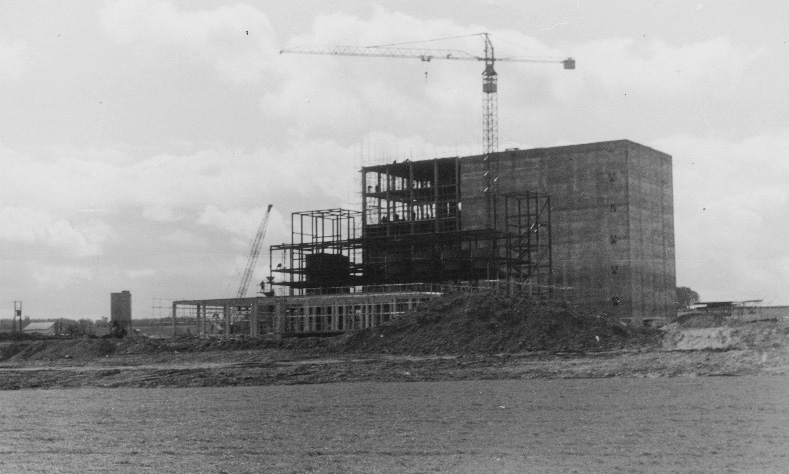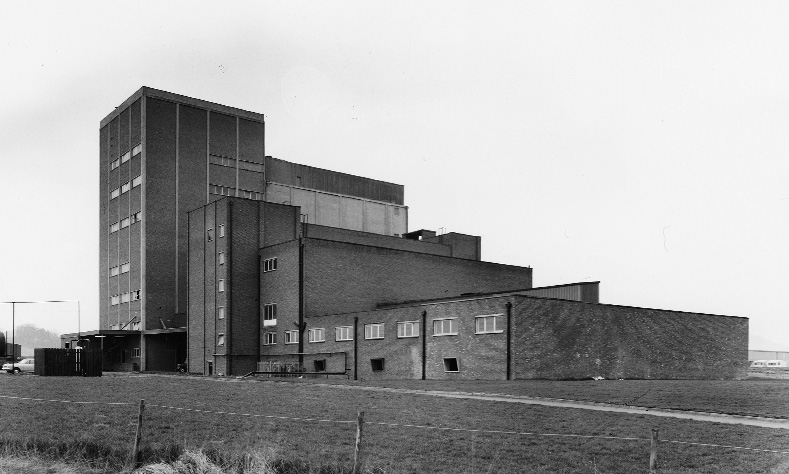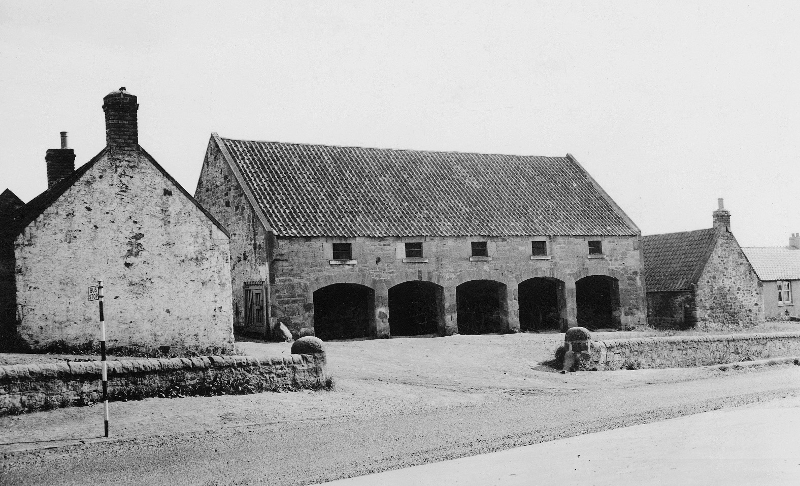Tourism | Industry | Agriculture
Tourism
Pencaitland is not a major tourist centre, but open days at Winton House and garden were, and remain, a major attraction, often coupled with visits to the parish church which until fairly recently was open each and every day, but is now open only when parties wish to visit. It is an anomaly that, now efforts are being made to open Scotland’s historic churches, Pencaitland church is not open daily. Winton House has recently also become available for a range of commercial functions – including weddings and other celebrations – and has a long tradition of musical events.
The distillery at Genkinchie has a thriving visitor centre and museum of malt whisky (opened in 1968 – see below).
There appears to have been no accommodation for holidaymakers in the village. There were no controlled campsites, though scout camps including the Charlotte Chapel group (see North Berwick parish – Canty Bay) spent a few days under canvas.
Industry
There have been a number of industrial activities in the parish, including mining.
The Pencaet Mine was privately owned; it ceased to be worked by William Gordon in the late 1960s or the early 1970s.
The Chancellorville Mine at Winton West Mains was opened privately by Mr Stein in the 1970s but closed after a short period of working under great difficulties. The Chancellorville mine was the last mine to produce coal in Pencaitland parish.
Distilling and malting is a thriving local and long-established industry, with Glenkinchie Distillery (established 1830) producing lowland malt whisky. On the outbreak of the war in 1939, the government severely restricted the supply of barley for distillery purposes; many distilleries closed but Glenkinchie was enabled to produce small quantities of whisky each year.
There was accommodation for horses at Glenkinchie. By 1956 the stables were almost empty except when Buchanan’s Clydesdale dray horses came from Glasgow for their summer holidays. Two horses were kept, and barley and coal were carted from Saltoun station until the railway line closed in the next decade.
Well-loaded private buses now visit the distillery carrying tourists, many of them from abroad, to view the distillery operations, see the museum, and no doubt to sample the wares. The permanent workforce – of some 10-14 – increases to about 23 during the tourist season.
Another very big user of barley is Baird’s Maltings, which processes the barley. The market varies from year to year. In the 1990s, much of the output was shipped from Southampton to Japan, but by 2000, brewers in the north of England were the major customers. Sited to the west of the village in 1965, a new plant was built in 1978, and new drier in 2000; the buildings do little to enhance the village, but do provide some employment. The workforce is comparatively small, originally about 18, but latterly somewhat smaller. Annual malt production capacity is 45,000 tonnes.

Maltings under construction, 1964

Maltings after completion
Other industries
When the mines and the pit were closed down and the Miners’ Institute became redundant, it served for some years as a small factory making architects’ models. This continued for a few years and then it closed down in the early 1990s; it was a loss to the village. The Miners’ Institute has since then served intermittently as a furniture store, and is now being converted into a house.
Since the 1960s, a recording studio – Castlesound Studios – has occupied the old school at the end of Easter Pencaitland. It employs only a small number of staff, but a large number of musical groups (including Runrig) have recorded there.
There was a coach company that operated briefly from Pencaitland; by the 1990s, it had moved its headquarters to Edinburgh.
There were and continue to be many craft workers, artists and potters working in the area; a few are given below.
When he stopped teaching in 1974, Lionel Gliori started making violins and beautiful harpsichords in a workroom in his house. The instruments are works of art, not only musically but also artistically, being colourfully decorated with painted landscapes and other designs. Lionel has also made a few pieces of church furniture. He is partially retired.
Winton Pottery is located on the estate but is a completely separate entity. Marg Hall studied pottery as part of a design course at Loughborough College, and then at Goldsmiths in London. She came to Pencaitland in the early 1970s, beginning her business in a small way and then full time in 1976. For three years she made miniature ceramic furniture, but since then has made hand thrown domestic stoneware and commissions such as commemorative plates and mugs. She sells at craft fairs, at Peter Potters Shop, Haddington, and holds three open days a year at the pottery. (Up to 1985, her husband Chriss Hall ‘sculpted’. He is now based elsewhere, and recently completed commissions for the council in Haddington and Musselburgh).
Peter Stewart, who made hand-built ceramics and traditional stone musical instruments such as ocarinas, joined Marg Hall from 1994-2000.
The last bellows maker in Scotland worked in the village until late 1970s. His name is thought to have been a Mr Waldie. A saddler to trade, he also made leather rugby and foot balls for Edinburgh schools and dog collars and so on.
Agriculture
Pencaitland remains an agricultural and rural parish. However, farms became bigger, and moved from horses (phased out by 1958) to more sophisticated machinery requiring fewer men. In the 1950s, the workforce would be 10-15 strong, compared with the farmer plus one or two in 2000 (dependent upon the number of cattle). Owners of expensive machines such as combines are often contracted to work other farms.
Attitudes too changed; both Cadzow (Huntlaw) and Ritchie (Jerusalem) emphasize that they did not overly use chemicals on their land (partly because of the cost, which could be greater than the benefit) and that they are keen to plant trees and take care of the hedges (although some had been removed to accommodate the larger machines). By 2000, the needs of the environment are being considered more. Farm paperwork is becoming increasingly computerised, and electronic ‘tagging’ of animals is coming in 2001. The farmers interviewed share a concern that the average age of farmers is 50+, and that fewer youngsters are entering the industry.
In 2000, three farmers own and run six of the parish’s farms – Wolfstar, Huntlaw, Templehall, Pencaitland, Lempockwells and Glenkinchie. The remaining farms – Spilmersford Mains, Nisbet, Jerusalem, Redmains, Wintonhill and Broomrigg – are all rented from the Winton estate.
Owned farms: Kings have owned and farmed Wolfstar over the whole period; in 1950, they farmed 500 acres. By 2000, this has increased to 810 acres, with the addition of parts of Pencaitland and Lempockwells farms. Wolfstar used 180 acres of grass for 150 beef cattle; Alec King is the only farmer to have bulls to breed his own herd. Hill farmers sometimes (dependant on the year) over-winter their sheep on part of Wolfstar.
Huntlaw came into the ownership of the Cadzow family in 1982; their acreage in 2000 is 700 acres, and includes parts of the lands of Lempockwells and Glenkinchie farms. Huntlaw has a nucleus of 40 beef cows.
Since 1993, Hamilton has owned and farmed Templehall, 470 acres. Templehall produces top-grade certificated beef for Marks & Spencer and Tescos, buying in 200 calves to raise intensively indoors. Four new stores have been built since 1993: one for cattle, one for grain storage and cattle feed; one for machinery and one for potatoes when grown (these were only grown under contract). In addition, sheep (not the farmer’s own stock) have been brought in to graze off one awkward shaped field.
In 2000, all of these owner-occupied farms grew similar proportions of the following: barley (spring & winter), sold to maltings (mostly Simpsons of Berwick) or for feeding cattle; winter wheat for milling at Chancelot Mills (Leith), or distilling, or for animal feed (sold to such as the chicken producers). Any ‘set aside’ was 10% of any arable acreage, and all the farmers used set-aside land for growing the industrial grade of oil-seed rape.
Rented from Winton estate
The Hoods have lived and worked Spilmersford Mains since 1939: they also farm part of Redmains, as well as owning some land outwith the parish. In 2000, they farm some 320 acres, growing winter wheat (sold to Chancelot Mills) and spring barley.
R. Young took over Nisbet‘s 300 acres in 1969. Nisbet’s spring barley went to Bairds of Pencaitland, its winter wheat to Chancelot Mills. Nisbet is the only farm in the parish to grow a commercial potato crop – about 25 acres.
In addition to their main farms, the Hoods and R. Young are also contracted to work Wintonhill‘s 500 acres. Both Spilmersford and Nisbet keep 200 beef cattle inside, grow oil seed rape and use around 25 acres for silage or hay.
The Ritchie family have run Jerusalem (where a few sheep were kept) and part of Redmains from 1936. In the early 1980s they also took on Broomrigg; by 2000, they farm about 300 acres. At Broomrigg, beans and barley are grown for feeding, together with hay and silage. Bull calves are bought in, and kept entire until their sale (at 14 months) for beef.
Land use has not changed radically except at Redmains, where land used for market garden crops became arable. In 1962, Spilmersford was self-sufficient in fruit, vegetables and milk for the seven workers and their families, with dairy cows and pigs. The total weekly pay cheque was £87. Five days’ rent now is equivalent to one years’ rent in the 1960s.

Cart-shed at Wester Pencaitland Farm before conversion
In the 1960s, Wintonhill had enough young men (under c18) to have its own football team, and 16-18 houses were occupied between Wintonhill and Spilmersford. By 2000, only four families lived off the 1500 acres of Spilmersford, Nisbet and Wintonhill.
Most of the farm cottages were rented out or sold, and steadings surplus to requirement were converted to homes, for example Wester Pencaitland farm cart shed was converted very successfully into a house & workshop (L. Gliore). When Lempockwells Farm was bought by Huntlaw in 1996, the steading was surplus to farm requirements; permission was granted for its demolition, and the stone was re-used to build six dwellings on the site – all attractive and designed in keeping with the rural setting. In 2000, Wintonhill Farmhouse is in the process of refurbishment by Winton estate after the tenant retired.
Beryl McNaughton (of Macplants at no 5) summarises life at the Boggs Holdings:
Many of the residents or their families have lived in the Boggs since the creation of the holdings by MAFF in 1933/34 (the date given varied depending who was speaking). Some families began in one holding and moved on to another if it became vacant and was considered a better holding. Approaching Pencaitland, the holdings on the right hand side were considered to have the better land. The left side was poorer and decreasingly good as it neared its boundary with Pencaitland, hence these holdings were mostly let with 10 acres and the right side with approx 7 acres. If the holder was proving good and enthusiastic he was offered it for buying from the Department of Agriculture. There is a general opinion that as people are not farming their land they are selling or leasing it to three local tenant farmers from the adjoining Winton estate.
Cuthills, no 17, at one time owned 24 acres but now have 9.5 acres, and still have a very small amount of fruit for PYO (pick your own). They have diversified to have a five van standing for caravans as a recognised Caravan Club site. After the war they grew raspberries, strawberries, black and red currants, gooseberries and potatoes. These were picked by children ‘bus loaded’ into the area from Edinburgh as well as local children from Pencaitland, Tranent, and Ormiston. The fruit was collected every night by large lorries and transported directly into the markets in Edinburgh, Newcastle, Manchester, Birmingham and Liverpool. Although some vegetables were grown for individual use, sprouts were the valuable winter crop and were grown by many holdings.
Most holdings had a cow for their own milk supply and some had calves for fattening. In the early 1960s pigs were considered to be a good idea, offering a quicker return on the land and at that time many holdings had large sheds built to house the pigs.
No 24 is across the road from no 17 and was bought in 1996 by a young couple with the intention of growing organic crops – they trade as East Coast Organic Boxes. They were able to begin their farming immediately as the ground had been unused except for a patch of strawberries. They have 2.5 acres and grow lettuce, strawberries and other salad crops. They keep hens for eggs. They use the usual holding brick built shed with its concrete floor as a packing and distribution area from which they send out ‘boxes’. Having brought in organic produce to strengthen what they are able to produce themselves, they make up a mixed box of organic produce. This is then distributed to interested customers. In April 2000 they bought a further 7.5 acres from Cuthills directly across the road, to extend and diversify their activities within the organic field. Presently they are waiting for the land to be certificated for growing. They use a small tractor and rotovator for cultivation.
No 38 is owned by Mrs Main who has been a resident since 1934, when her parents acquired the 10 acre holding. She was absent from no 38 for 7½ years when she was first married. Like all Boggs children she travelled by bus to school at Preston Lodge, Prestonpans. Her parents and later she herself grew fruit and some vegetables, much of which they sold at the door. They kept a small herd of calves for fattening.
Mr and Mrs. Yule live in the teacher’s cottage adjoining the Old Schoolhouse and keep horses on their small piece of land. In the early 1990s they bought 1 acre from the Berrybank owner (Andrew Auld) for £10,000 to provide them with grazing for their horses.
At the present time there are approximately 80 horses stabled in the Boggs area. Mostly they are kept by residents for their own use although there is a livery stable, which homes approximately 25 horses. These can be seen being exercised along the roads or bridle paths. This stable has changed hands several times; its use has also changed – from livery to riding stable catering as a training school, and then back to livery.
No 5 – Berrybank – had been rented in 1958 by George Auld before being bought by him. It was run as an agriculture holding similar to most in the Boggs, cropping the usual raspberries, strawberries, gooseberries, red and black currants followed by the winter sprout crop. In 1981, Mr Auld not only sent produce to the market in Edinburgh, but also opened his fields to the general public for PYO. This practice continued for seven years until he sold his holding to his son Andrew. Mr Auld had a haulage lorry that he did business with and I believe when the son took over he continued running lorries from the site. The fields appear to have been put down to pasture at this time as young Mrs Auld owned several horses some of which she trained as trotters for racing. During the next eight years, Andrew and his wife considerably extended the house making a large kitchen, changing the main living area and adding on two rooms plus bathroom as well as a stair up to the attic space with a bedroom.
Suddenly the house was much larger so they decided to sell. In June 1996, Macplants, a nursery specialising in growing alpines and perennials, bought the holding of approximately 8.5 acres.
Gavin and Alison McNaughton bought the house, so Gavin works at home running the nursery, a family business having been in existence for about 20 years, which had operated on leased sites and was started by Beryl McNaughton in Edinburgh. There are three full-time employees as well as seasonal staff, who work alongside Beryl and Gavin producing plants for sale to garden centres, other nurseries, landscape firms, public bodies such as the National Trust for Scotland, the Royal Botanic Gardens, Historic Scotland and so on. In the brick shed a small retailing outlet is run for selling plants grown on the nursery and is operated by daughter Claire McNaughton.
The field fences were all changed to make the running of the nursery easier. Tunnels have been erected in keeping with planning regulations as the flat site was exposed, particularly from the west. One of the first jobs was to plant shelterbelts of young trees, mostly native species; these are now becoming established and beginning to deflect some of the weather. Internal windbreak fences have been erected to help, alongside internal hedging. One large paddock exists which is kept fallow and provides a crop of hay, whilst another paddock to the back of the house is to be made into a large garden for the house. A further paddock is ploughed and being used as a plant stock area.